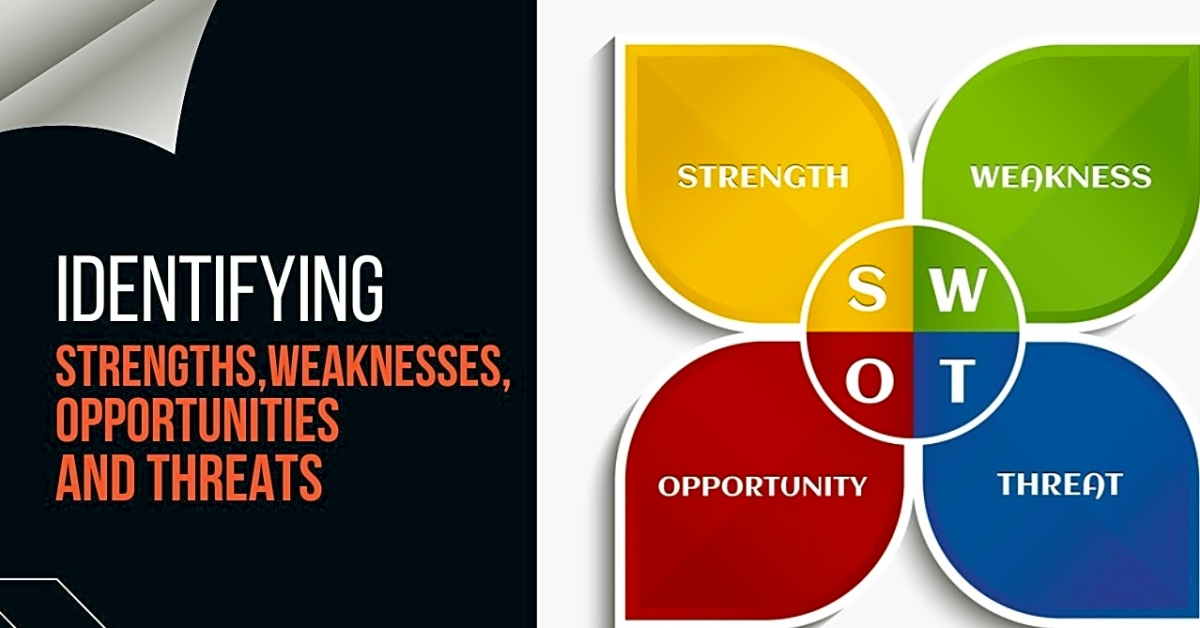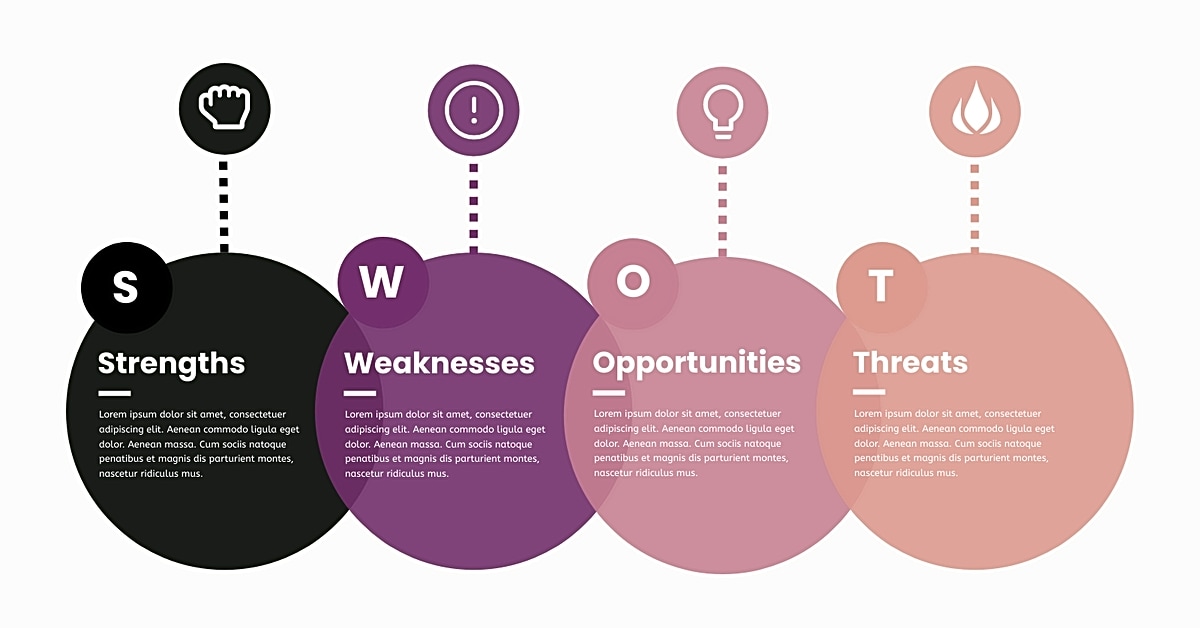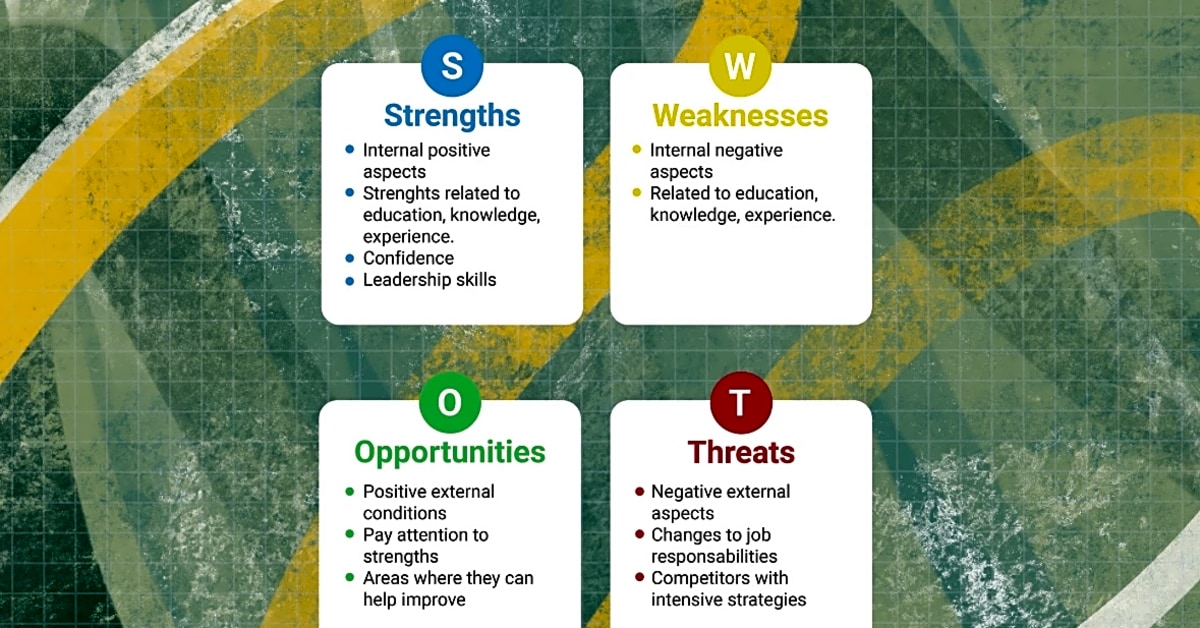Welcome to our comprehensive guide on identifying internal strengths and weaknesses. As part of the SWOT Analysis process, it is crucial to have a clear understanding of your organization’s internal factors. These internal factors, also known as strengths and weaknesses, play a significant role in shaping your business strategy and decision-making process. In this article, we will provide you with a step-by-step guide on how to identify your internal strengths and weaknesses, and how to use them to your advantage. Whether you are a small startup or a large corporation, this guide will help you gain a deeper understanding of your organization’s capabilities and limitations. So let’s dive in and learn how to effectively conduct an internal analysis to drive your business forward.
To begin, let’s define what a SWOT analysis is and why it is important. SWOT stands for Strengths, Weaknesses, Opportunities, and Threats. It is a strategic planning tool that helps individuals and organizations identify their internal strengths and weaknesses, as well as external opportunities and threats.
Conducting a SWOT analysis can provide valuable insights for businesses and individuals alike. It allows them to assess their current situation and make informed decisions for the future. By identifying internal strengths and weaknesses, individuals can capitalize on their strengths and work on improving their weaknesses. Businesses can use this information to stay competitive in the market and make strategic decisions to grow their business.
Now, let’s dive into the steps of conducting a SWOT analysis. The first step is to gather information. This includes gathering data on the organization or individual’s products, services, customers, competitors, and industry trends. This information will serve as the foundation for the analysis.
The next step is to identify internal strengths and weaknesses. This involves looking at the organization or individual’s resources, capabilities, and skills. Some examples of internal strengths could be a strong brand image, loyal customer base, or efficient processes. Weaknesses could include high employee turnover, outdated technology, or limited financial resources.
To help illustrate these concepts, let’s look at some real-life examples. A small business owner may conduct a SWOT analysis to assess their company’s current state. They may identify their strong customer relationships as a strength, but also recognize their lack of marketing expertise as a weakness. This information can then be used to develop strategies to build on their strengths and address their weaknesses.
In addition to real-life examples, we also offer templates that you can use to conduct your own SWOT analysis. These templates provide a framework for organizing your thoughts and data, making the process more efficient and effective.
By the end of this article, you will have a clear understanding of how to identify internal strengths and weaknesses using a SWOT analysis. Remember, this tool is not just for businesses, it can also be used for personal development purposes. So whether you are looking to improve your business or yourself, conducting a SWOT analysis is a valuable tool that can help guide your decisions and actions.
Understanding SWOT Analysis
In order to effectively identify internal strengths and weaknesses, it is crucial to understand the concept of SWOT analysis. SWOT stands for Strengths, Weaknesses, Opportunities, and Threats. It is a strategic planning tool that helps individuals and organizations assess their current position and potential for growth.
SWOT analysis involves examining internal factors (strengths and weaknesses) and external factors (opportunities and threats) that may impact an individual or organization. It provides a holistic view of the current situation, allowing for a better understanding of strengths to capitalize on and weaknesses to improve upon.
This analysis is important because it can help individuals and organizations make informed decisions, develop effective strategies, and identify areas for improvement. By understanding both internal strengths and weaknesses, individuals and organizations can leverage their strengths while working towards minimizing or addressing their weaknesses.
Real-Life Examples
When it comes to identifying internal strengths and weaknesses, it can be helpful to see real-life examples in action. This not only provides a better understanding of the SWOT analysis process, but it also allows for practical applications in various scenarios.
For example, a small business owner can use SWOT analysis to identify their company’s strengths and weaknesses in terms of their products, customer service, and financial stability. This can help them make strategic decisions to improve their business and stay ahead of competitors.
On a personal level, SWOT analysis can be used to identify individual strengths and weaknesses in relation to career goals or personal development. This can help individuals focus on areas of improvement and capitalize on their strengths.
There are also numerous templates and tools available for conducting a SWOT analysis, such as the SWOT matrix or the TOWS analysis framework. These can be customized to fit specific needs and objectives.
Overall, incorporating real-life examples into your SWOT analysis process can make it more relevant and effective for your specific situation. By analyzing internal strengths and weaknesses in a practical way, you can gain valuable insights to drive success in both business and personal endeavors.
Templates
Templates are a useful tool for conducting a SWOT analysis as they provide a structured format to organize and analyze your internal strengths and weaknesses. They can be used for both business and personal development purposes, making them versatile and adaptable to various scenarios.
One popular template for conducting a SWOT analysis is the 2×2 grid, which divides the analysis into four quadrants: strengths, weaknesses, opportunities, and threats. This allows for a clear visual representation of each aspect and how they relate to each other.
Another useful template is the TOWS matrix, which goes beyond the traditional SWOT analysis by incorporating strategies for maximizing strengths, minimizing weaknesses, capitalizing on opportunities, and mitigating threats.
There are also many online templates and tools available that can assist with conducting a SWOT analysis, such as questionnaires and interactive charts. These can save time and provide a more efficient way to gather and analyze data.
Overall, templates are a valuable resource for conducting a SWOT analysis and can help guide individuals or businesses towards identifying their internal strengths and weaknesses. It is important to choose the right template that best fits your needs and goals in order to get the most out of your SWOT analysis.
Step-by-Step Guide
A SWOT analysis is a strategic planning tool that helps individuals and organizations identify their internal strengths and weaknesses, as well as external opportunities and threats. It is a simple yet powerful way to assess the current state of a business or project and determine the best course of action for future success.
To conduct a SWOT analysis, follow these steps:
- Identify your objective or goal: Before you begin the analysis, it is important to have a clear understanding of what you want to achieve. This will help you focus on the most relevant internal strengths and weaknesses.
- Gather information: Collect data from reliable sources such as market research, customer feedback, and employee surveys. This will provide a well-rounded view of your organization’s strengths and weaknesses.
- List internal strengths: These are the positive attributes and resources within your organization that give you a competitive advantage. They can include things like a strong brand reputation, loyal customer base, or skilled employees.
- List internal weaknesses: These are the negative aspects or limitations of your organization that may hinder your success. They can include factors such as outdated technology, lack of funding, or high employee turnover.
- Analyze the data: Once you have identified your strengths and weaknesses, analyze them to determine their impact on your overall objective. For example, a highly skilled workforce may be a strength if your goal is to increase productivity, but it may be a weakness if your goal is to reduce costs.
- Find opportunities: Look for external factors that could potentially benefit your organization. These can include changes in the market, emerging technologies, or new partnerships.
- Identify threats: These are external factors that could negatively impact your organization. They can include things like new competitors, economic downturns, or changing consumer trends.
By following these steps, you can conduct a thorough SWOT analysis and identify your internal strengths and weaknesses. Remember to use this information to inform your decision-making and create strategies to capitalize on strengths and address weaknesses.
In conclusion, identifying internal strengths and weaknesses is crucial for any individual or organization looking to achieve success. By conducting a SWOT analysis, you can gain valuable insights into your strengths and weaknesses, which can be used to make informed decisions and improve overall performance. Remember to regularly review and update your SWOT analysis to stay ahead of any changes or challenges that may arise.


